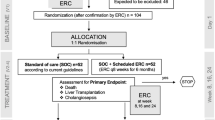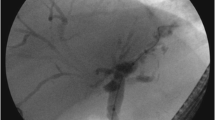Abstract
Intensive care unit (ICU) is important in the rehabilitation of critically ill patients. In the past decades, many patients who received aggressive treatment in ICU developed sclerosing cholangitis in multiple centers. Sclerosing cholangitis in critically ill patients (SC-CIP) is a relatively new issue. To investigate the causes, clinical manifestation, treatment, and prognosis of SC-CIP, we searched for published cases in the databases of PubMed, Highwire, and Elsevier from 2001 to 2012. Data were extracted using a standard form and retrospectively analyzed. Twelve eligible studies covering 88 patients, with 64 men and 24 women, were enrolled in this analysis. The mean age was 49.8 years. All of the patients recovered from critical illnesses, such as trauma, infection, burn, and major surgeries. High pressure positive end-expiratory pressure (PEEP, peak level at 12.8 cm H2O) was utilized for all patients, with the average duration of 36.3 d. In addition, vasopressor agents were administered in approximately 60%of SC-CIP. A rapid increase in cholestasis and irregular strictures in the intrahepatic bile ducts was observed in the following months. With an average follow-up period of 17.9 months, poor outcomes were observed in 54 patients, including 34 deaths. In conclusion, ischemic injury of the biliary tree, which may be affected by PEEP and/or vasopressor administration, affects cholangiopathic procedure. As a newly discovered type of secondary sclerosing cholangitis, SC-CIP is a severe progressive complication of patients in ICU and should be carefully monitored by clinicians.
Similar content being viewed by others
References
Gelbmann CM, Rümmele P, Wimmer M, Hofstädter F, Göhlmann B, Endlicher E, Kullmann F, Langgartner J, Schölmerich J. Ischemic-like cholangiopathy with secondary sclerosing cholangitis in critically ill patients. Am J Gastroenterol 2007; 102(6): 1221–1229
Kulaksiz H, Heuberger D, Engler S, Stiehl A. Poor outcome in progressive sclerosing cholangitis after septic shock. Endoscopy 2008; 40(3): 214–218
Scheppach W, Druge G, Wittenberg G, Mueller JG, Gassel AM, Gassel HJ, Richter F. Sclerosing cholangitis and liver cirrhosis after extrabiliary infections: report on three cases. Crit Care Med 2001; 29 (2): 438–441
ter Borg PC, van Buuren HR, Depla AC. Bacterial cholangitis causing secondary sclerosing cholangitis: a case report. BMC Gastroenterol 2002; 2(1): 14
Engler S, Elsing C, Flechtenmacher C, Theilmann L, Stremmel W, Stiehl A. Progressive sclerosing cholangitis after septic shock: a new variant of vanishing bile duct disorders. Gut 2003; 52(5): 688–693
Benninger J, Grobholz R, Oeztuerk Y, Antoni CH, Hahn EG, Singer MV, Strauss R. Sclerosing cholangitis following severe trauma: description of a remarkable disease entity with emphasis on possible pathophysiologic mechanisms. World J Gastroenterol 2005; 11(27): 4199–4205
Jaeger C, Mayer G, Henrich R, Gossner L, Rabenstein T, May A, Guenter E, Ell C. Secondary sclerosing cholangitis after long-term treatment in an intensive care unit: clinical presentation, endoscopic findings, treatment, and follow-up. Endoscopy 2006; 38(7): 730–734
Esposito I, Kubisova A, Stiehl A, Kulaksiz H, Schirmacher P. Secondary sclerosing cholangitis after intensive care unit treatment: clues to the histopathological differential diagnosis. Virchows Arch 2008; 453(4): 339–345
Schnitzbauer AA, Tsui TY, Kirchner G, Scherer MN, Bein T, Schlitt HJ, Obed A. Liver transplantation for sclerosing cholangitis in a polytraumatized patient. Nat Clin Pract Gastroenterol Hepatol 2009; 6(2): 121–126
Al-Benna S, Willert J, Steinau HU, Steinstraesser L. Secondary sclerosing cholangitis, following major burn injury. Burns 2010; 36 (6): e106–e110
Tian M, Lv Y, Li J. Hepatobiliary and pancreatic: sclerosing cholangitis associated with critical illness. J Gastroenterol Hepatol 2010; 25(4): 842
Kwon ON, Cho SH, Park CK, Mun SH. Biliary cast formation with sclerosing cholangitis in critically ill patient: case report and literature review. Korean J Radiol 2012; 13(3): 358–362
Abdalian R, Heathcote EJ. Sclerosing cholangitis: a focus on secondary causes. Hepatology 2006; 44(5): 1063–1074
Ruemmele P, Hofstaedter F, Gelbmann CM. Secondary sclerosing cholangitis. Nat Rev Gastroenterol Hepatol 2009; 6(5): 287–295
Deltenre P, Valla DC. Ischemic cholangiopathy. J Hepatol 2006; 44 (4): 806–817
Paramythiotis D, Kazamias1 P, Grosomanidis1 V, Kotzampassi K. Splanchnic ischemia during mechanical ventilation. Annals Gastroenterol 2008; 21(1): 45–52
Putensen C, Wrigge H, Hering R. The effects of mechanical ventilation on the gut and abdomen. Curr Opin Crit Care 2006; 12(2): 160–165
Träger K, Radermacher P, Georgieff M. PEEP and hepatic metabolic performance in septic shock. Intensive Care Med 1996; 22(11): 1274–1275
Krejci V, Hiltebrand LB, Sigurdsson GH. Effects of epinephrine, norepinephrine, and phenylephrine on microcirculatory blood flow in the gastrointestinal tract in sepsis. Crit Care Med 2006; 34(5): 1456–1463
Lee JG, Schutz SM, England RE, Leung JW, Cotton PB. Endoscopic therapy of sclerosing cholangitis. Hepatology 1995; 21(3): 661–667
Narumi S, Roberts JP, Emond JC, Lake J, Ascher NL. Liver transplantation for sclerosing cholangitis. Hepatology 1995; 22(2): 451–457
Harnois DM, Angulo P, Jorgensen RA, Larusso NF, Lindor KD. High-dose ursodeoxycholic acid as a therapy for patients with primary sclerosing cholangitis. Am J Gastroenterol 2001; 96(5): 1558–1562
Triantos CK, Koukias NM, Nikolopoulou VN, Burroughs AK. Meta-analysis: ursodeoxycholic acid for primary sclerosing cholangitis. Aliment Pharmacol Ther 2011; 34(8): 901–910
Lindor KD, Kowdley KV, Luketic VA, Harrison ME, McCashland T, Befeler AS, Harnois D, Jorgensen R, Petz J, Keach J, Mooney J, Sargeant C, Braaten J, Bernard T, King D, Miceli E, Schmoll J, Hoskin T, Thapa P, Enders F. High-dose ursodeoxycholic acid for the treatment of primary sclerosing cholangitis. Hepatology 2009; 50(3): 808–814
Eaton JE, Silveira MG, Pardi DS, Sinakos E, Kowdley KV, Luketic VA, Harrison ME, McCashland T, Befeler AS, Harnois D, Jorgensen R, Petz J, Lindor KD. High-dose ursodeoxycholic acid is associated with the development of colorectal neoplasia in patients with ulcerative colitis and primary sclerosing cholangitis. Am J Gastroenterol 2011; 106(9): 1638–1645
Katsinelos P, Kountouras J, Chatzimavroudis G, Zavos C, Pilpilidis I, Paroutoglou G. Combined endoscopic and ursodeoxycholic acid treatment of biliary cast syndrome in a non-transplant patient.World J Gastroenterol 2008; 14(33): 5223–5225
Bansal V, Schuchert VD. Jaundice in the intensive care unit. Surg Clin North Am 2006; 86(6): 1495–1502
Brienza N, Dalfino L, Cinnella G, Diele C, Bruno F, Fiore T. Jaundice in critical illness: promoting factors of a concealed reality. Intensive Care Med 2006; 32(2): 267–274
Spirt MJ, Stanley S. Update on stress ulcer prophylaxis in critically ill patients. Crit Care Nurse 2006; 26(1): 18–20, 22–28, quiz 29 Ting Lin et al. 9
Author information
Authors and Affiliations
Corresponding author
Additional information
Kai Qu and Ting Lin contributed equally to this study.
Rights and permissions
About this article
Cite this article
Lin, T., Qu, K., Xu, X. et al. Sclerosing cholangitis in critically ill patients: an important and easily ignored problem based on a German experience. Front. Med. 8, 118–126 (2014). https://doi.org/10.1007/s11684-014-0306-6
Received:
Accepted:
Published:
Issue Date:
DOI: https://doi.org/10.1007/s11684-014-0306-6




